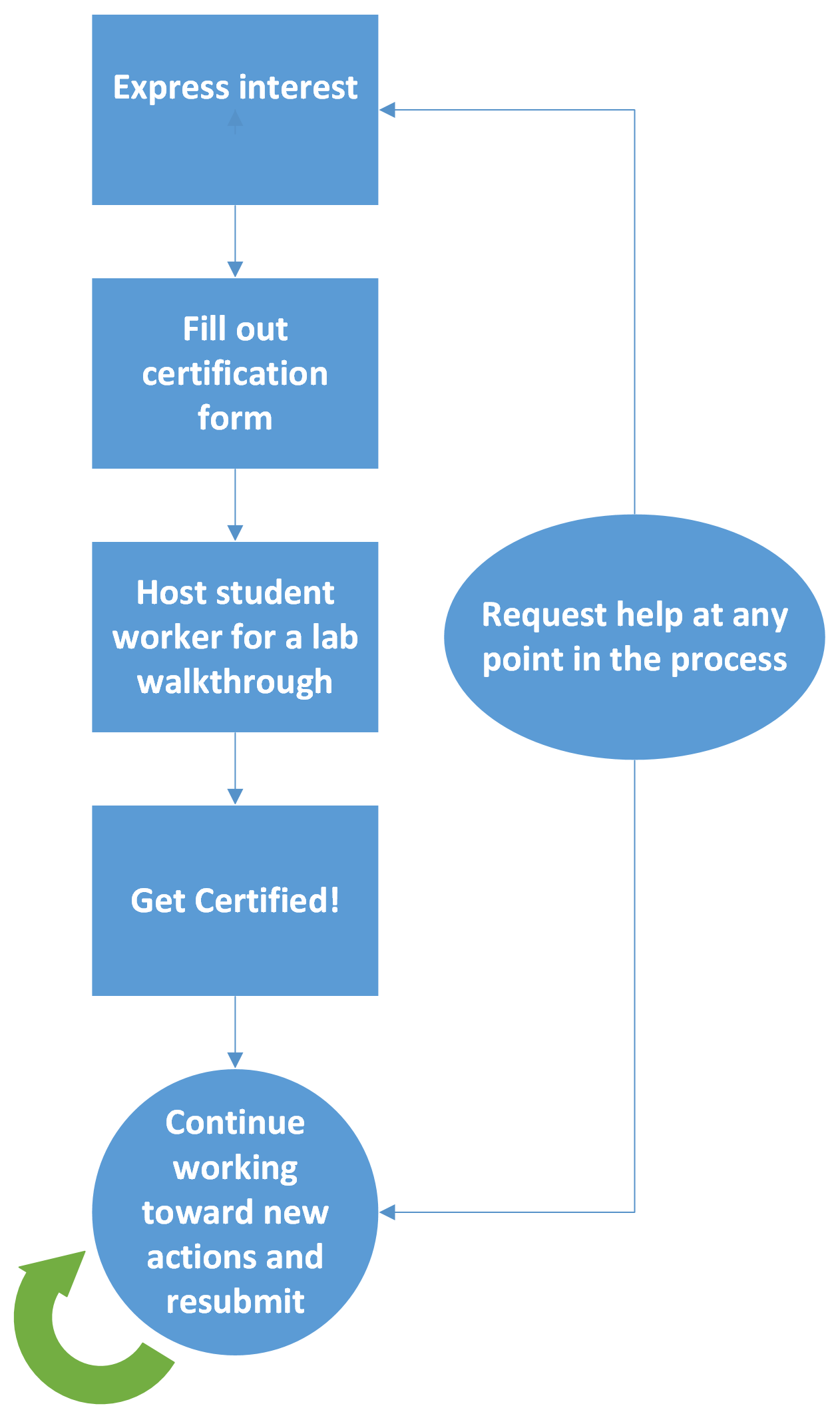Green Labs certification program
What is the Green Labs program?
The Green Labs program at Mines seeks to make research laboratories on campus more sustainable. The program provides labs with the education and resources to reach their sustainability goals.
What is the Green Labs Certification Process?
The Green Labs Certification Process focuses on giving labs a myriad of ways to work sustainably. It rewards labs for what they already do and shows them what more is possible. After filling out the certification form, a lab will be given one of four certification levels: bronze, silver, gold, and platinum.
A lab’s purpose should never hold it back from attempting to be sustainable. This program allows for flexibility based on type of research conducted in the lab.
Why Get Certified?
Going through the certification process does a few key things for your lab.
- Develop a baseline for your lab’s sustainability
- Get specific, actionable suggestions to decrease your lab’s environmental impact
- Get recognition for measures already in place
- Potentially save money!
How to Get Certified
- Contact Green Labs Team at GreenLabs@mines.edu
- Complete our self-assessment spreadsheet
- Review your accomplishments
- Submit your results for certification

Why does this matter for campus?
Laboratories are the largest consumer of power, heat resources, and materials for most universities. At Mines, the top 5 energy-consuming buildings, which contain most of the labs on campus, use as much power as the bottom 21 (mostly administrative, athletics, and residence halls). By implementing sustainable practices, thousands of dollars could be saved annually. Dozens of tons of waste and carbon emissions could be saved from further polluting the world. All without affecting the important research that takes place on campus.
Advancing certification Level
The Sustainability Office invites any lab that wishes to update their certification level to resubmit their form.
Introduction to Green Labs: A quick guide to bronze
The set of actions shown below is a quick and straightforward way to achieve the bronze certification level. These actions are a combination of a few high-impact actions and a few lower-impact, easier-to-accomplish actions.
|
Energy
|
Outreach and Engagement
|
|
Equipment
|
Chemical Usage
|
|
Waste Management
|
Water Usage
|
Doing all the above actions will earn a lab the bronze level certification. From there, it is the hope of the sustainability department that a coordinator will be able to notice easily actionable items and progress along the certification path.
External Resources
For more information and for sustainability resources, please explore the links below.
Travelling can cause significant greenhouse gas emissions. This program supports the purchase of carbon offsets from sites like Terra Pass. Purchase carbon offsets.
Learn more
The American Chemical Society has additional resources for green chemistry and green chemistry education. Learn more from their website.
Massachusetts Institute of Technology has a comprehensive guide for green labs including several tools to help labs choose greener reagents and solvents. Read more from MIT’s green labs program.